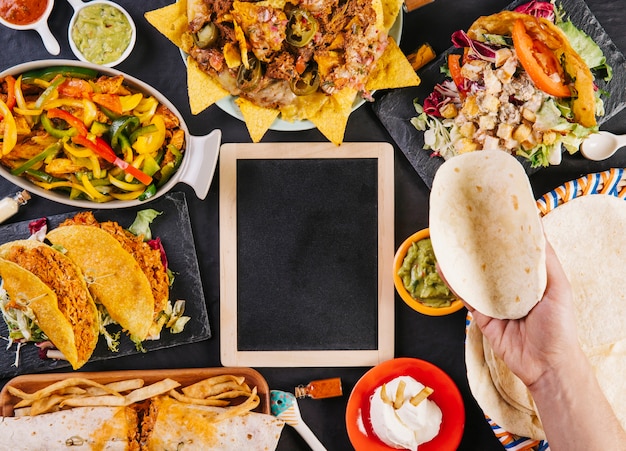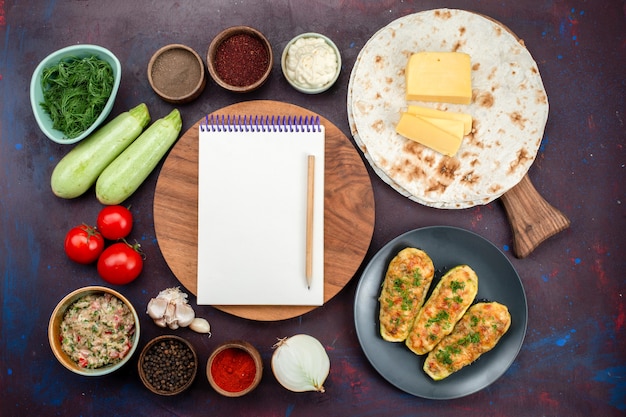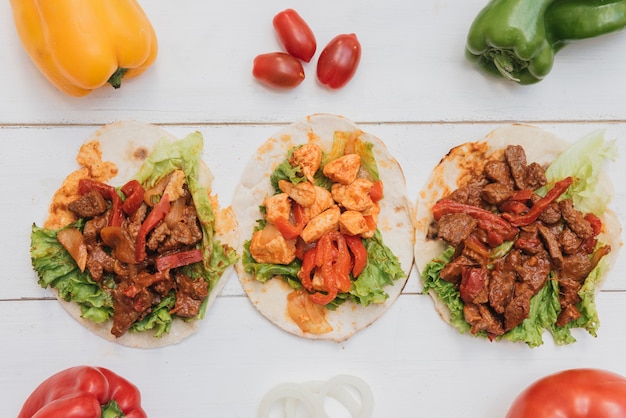(Part 1) Choosing the Right Chicken

The first step to truly outstanding fajitas is starting with the right chicken. It's not just about any old cut, it's about picking those cuts that will give you the best texture and flavor.
The Fajita Cut:
You've probably heard of "fajita" cut chicken, but what exactly is that? It's not a specific cut of meat, but rather a way to prepare chicken for fajitas. Basically, you want to slice your chicken against the grain into thin strips about 1/4 inch thick. This is crucial because it allows the chicken to cook more evenly and also makes it easier to chew and enjoy.
I personally prefer using chicken breasts for fajitas because they tend to be quite lean and cook quickly. They're also readily available and quite versatile. However, if you're looking for something a little more indulgent, boneless, skinless chicken thighs can also work wonders. They're a bit more flavorful than breasts and can handle a longer cooking time, which is great for those who like their chicken with a little more "oomph".
Don't Skimp on the Quality:
I'm going to be blunt here, don't even think about using frozen chicken or bargain-bin cuts. The quality of your chicken will significantly impact the final result. Fresh chicken is the way to go, and don't be afraid to spend a little extra for a good-quality bird. You'll taste the difference, I promise!
(Part 2) The Art of Marinating

Now, onto the marinade – this is where things get really exciting, and it's your chance to add your own personal touch. A good marinade will not only add flavor to the chicken, but it will also help to tenderize it, making it extra juicy and flavorful.
The Basics:
Your marinade should include a good balance of acid (like lime juice or vinegar), oil (like olive oil), and aromatics (like garlic, onion, and spices). The acid helps to break down the chicken proteins, while the oil helps to keep it moist and the aromatics add tons of flavor.
My Go-To Marinade:
I have a tried-and-true marinade recipe that is a surefire winner. You can always adjust the ingredients to your liking, but this one is my go-to:
Ingredients:
- 1/2 cup fresh lime juice - I always use fresh lime juice for the best flavor. Don't be tempted to use bottled juice!
- 1/4 cup good-quality olive oil - Look for an extra virgin olive oil with a fruity flavor.
- 2 cloves garlic, minced - Don't be afraid to use more garlic if you love it!
- 1 small red onion, finely chopped - Choose a red onion for a slightly sweeter flavor.
- 1 teaspoon cumin - Cumin is a must-have for authentic fajita flavor.
- 1 teaspoon chili powder - Adjust the amount of chili powder based on your preferred level of spice.
- 1/2 teaspoon smoked paprika - This adds a smoky depth of flavor.
- 1/4 teaspoon cayenne pepper (optional, for a little heat) - Start with a small amount and add more to taste if you like it spicy.
- Salt and freshly ground black pepper to taste - Don't forget the salt and pepper!
Instructions:
- Combine all ingredients in a bowl and whisk until everything is well combined.
- Add the chicken strips to the marinade, making sure they're completely coated.
- Cover the bowl and refrigerate the chicken for at least 2 hours, or even overnight for maximum flavor.
The longer the chicken marinates, the more flavorful it will be. So, if you have time, I recommend marinating it overnight!
(Part 3) Cooking the Chicken to Perfection

Alright, so your chicken has had ample time to soak up all that delicious marinade. Now it's time to cook it up! You can cook your chicken fajitas on the stovetop, in the oven, or even on the grill, but the key is to cook them quickly and evenly to keep them juicy and tender.
Stovetop Method:
This is my go-to method because it's quick, easy, and gives you that delicious sear. Here's how to do it:
- Heat a large skillet or cast iron pan over medium-high heat. A cast iron pan is ideal for getting a nice sear on the chicken.
- Add a tablespoon or two of oil to the pan, and once it's shimmering, add the marinated chicken strips. Don't overcrowd the pan! Cook the chicken in batches if necessary.
- Cook the chicken, stirring occasionally, for about 5-7 minutes per side, or until it's cooked through and nicely browned. Be careful not to overcook the chicken, as it can become dry and tough.
If you're cooking for a crowd or just prefer the oven, it's a great option. It's also a good choice if you're worried about overcooking the chicken. Here's how to do it:
- Preheat your oven to 400°F (200°C).
- Spread the marinated chicken in a single layer on a baking sheet lined with parchment paper. This will prevent the chicken from sticking.
- Bake for 15-20 minutes, or until the chicken is cooked through and nicely browned. Use a meat thermometer to check the internal temperature. It should reach 165°F (74°C) for safe consumption.
Grilling Method:
For that smoky, char-grilled flavor, go for the grill. It's perfect for those warm summer evenings! Here's how to do it:
- Preheat your grill to medium-high heat.
- Add the marinated chicken to the grill and cook for about 3-5 minutes per side, or until the chicken is cooked through and nicely browned.
(Part 4) Assembling Your Fajitas
Your chicken is cooked, so now it's time to assemble those amazing fajitas! There are so many options here, so let's delve into some of the basics and then explore some fun variations.
The Essentials:
Every good fajita needs a few essential components. Here are the ones I always have on hand:
- Warm tortillas: Flour or corn tortillas, whatever your preference is. Just make sure they're warm and pliable!
- bell peppers and onions: These are the classic fajita veggies. Slice them into strips and cook them alongside the chicken or separately until tender and caramelized.
- Guacamole: This creamy, avocado-based dip is the perfect complement to fajitas. You can buy it pre-made or whip up your own. I love to make my own guacamole with fresh avocados, lime juice, cilantro, and a pinch of salt and pepper.
- Salsa: Fresh, chunky salsa adds a burst of flavor and heat. I prefer to use a homemade salsa with fresh tomatoes, onions, cilantro, and a touch of lime juice.
- Sour cream or crema fresca: A dollop of sour cream or crema fresca adds a tangy and creamy touch.
Adding Some Zing:
Now, let's get creative! Here are a few more toppings and ideas to really take your fajitas to the next level:
- Pico de gallo: A mix of chopped tomatoes, onions, cilantro, and lime juice, pico de gallo adds a fresh and vibrant element.
- roasted corn: Roasted corn kernels add a sweet and smoky flavor. You can roast the corn on the cob or cut it off the cob before roasting.
- Grilled pineapple: Grilled pineapple adds a touch of sweetness and acidity. It's a delicious and unexpected twist on the classic fajita.
- black beans: Black beans are a great source of protein and fiber. They also add a hearty texture to the fajitas.
- Shredded cheese: A sprinkle of shredded cheddar, Monterey Jack, or queso fresco adds a cheesy goodness.
- Hot sauce: Don't forget the hot sauce! A dash of your favorite hot sauce can really kick things up a notch.
(Part 5) Serving Your Fajitas
You've got your chicken sizzling, your toppings are ready, and your tortillas are warm. Now, it's time to get this feast on the table!
The Fajita Buffet:
I absolutely love to set up a fajita buffet so everyone can create their own perfect fajitas. It's fun, interactive, and everyone gets to enjoy their own unique combination of flavors.
- The platter: Arrange the cooked chicken and veggies on a platter or in a serving dish.
- The toppings: Lay out all your toppings, like guacamole, salsa, sour cream, and cheese in separate bowls.
- The tortillas: Keep the warm tortillas in a tortilla warmer or wrapped in a clean kitchen towel.
Serving Suggestions:
Here are a few tips to make your fajita buffet a hit:
- Warm the tortillas: Nothing is worse than cold tortillas, so make sure to warm them up before serving. You can do this in a microwave, oven, or on a griddle.
- Keep it organized: Keep the toppings separated so they don't get mixed together.
- Get creative: Encourage your guests to try different combinations of toppings.
- Don't forget the drinks: Fajitas pair well with cold beer, margaritas, or even a refreshing iced tea.
(Part 6) Fajitas for One: A Solo Feast
Don't think you need a crowd to enjoy delicious fajitas. You can absolutely have a fantastic fajita night for one!
The Essentials for One:
Here's a streamlined approach to enjoying fajitas all by yourself:
- Chicken and veggies: Cook just enough chicken and veggies for one serving.
- The toppings: Choose your favourite toppings and set them up on a small plate.
- Warm tortilla: Grab one warm tortilla.
Enjoying Your Fajitas Solo:
Here's how to make the experience enjoyable and satisfying:
- Assemble with care: Place the chicken and veggies in the centre of the tortilla.
- Add your favourite toppings: Be generous with your toppings! This is your chance to enjoy exactly what you love.
- Enjoy the moment: Take your time and savor every bite.
(Part 7) Fajitas Beyond the Basics: Exploring Variations
So, you've mastered the classic fajita. But if you're looking for ways to keep things fresh and exciting, there are tons of variations to explore.
Beyond Chicken: Fajitas with Other Proteins
Chicken is great, but don't be afraid to experiment with other proteins. Here are some ideas:
- Steak fajitas: Sizzling steak fajitas are a classic for a reason. They're rich, flavorful, and perfect for a special occasion.
- Shrimp fajitas: Shrimp fajitas are a lighter and more delicate option. They're also a great choice for a healthy meal.
- Tofu fajitas: Tofu fajitas are a great vegetarian option. You can marinate the tofu in a similar marinade as the chicken.
- Fish fajitas: Fish fajitas are a delicious and healthy option. I love to use firm white fish like cod or tilapia for fajitas.
Beyond the Tortilla: Other Serving Ideas
Who says fajitas have to be in a tortilla? Here are some fun alternatives:
- Salad bowls: Serve fajita ingredients over a bed of lettuce for a lighter meal. You can use a mix of greens, like romaine, spinach, and arugula.
- rice bowls: Top a bed of rice with fajita chicken, veggies, and your favourite toppings. I love to use brown rice or quinoa for added nutrients.
- Tacos: Use smaller tortillas to create tacos instead of larger fajitas. You can use corn or flour tortillas for tacos.
- Quesadillas: Combine fajita chicken and veggies with cheese in a quesadilla. This is a quick and easy way to enjoy fajitas.
(Part 8) Tips and Tricks
Here are a few tips and tricks that I've picked up over the years that will help you make the most delicious fajitas imaginable:
Tips for juicy chicken:
Juicy chicken is essential for a good fajita. Here are a few tips to ensure your chicken stays moist:
- Don't overcook it: Overcooked chicken can be dry and tough. Cook it to an internal temperature of 165°F (74°C). Use a meat thermometer to check the internal temperature.
- Let it rest: After cooking, let the chicken rest for a few minutes before slicing. This will allow the juices to redistribute.
Tips for Flavorful Veggies:
Don't forget about the veggies! They add a ton of flavor and texture to fajitas. Here are a few tips to make your veggies shine:
- Caramelize them: Caramelizing the bell peppers and onions adds a sweetness and depth of flavor. Cook them over medium heat until they are soft and slightly browned.
- Use a mix of colors: Use a mix of red, green, and yellow bell peppers for a colorful and flavorful dish.
Tips for the Perfect Tortillas:
The tortilla is the foundation of any fajita. Here's how to make sure yours are perfect:
- Warm them up: Warm tortillas are soft and pliable. You can warm them in a microwave, oven, or on a griddle.
- Use fresh tortillas: Fresh tortillas have the best flavor. If you can't find fresh tortillas, you can use warmed up store-bought tortillas.
(Part 9) FAQs
You've got all the basics, but still have some questions? Here are some of the most frequently asked questions about making fajitas:
Q: Can I make fajitas ahead of time?
A: Absolutely! You can prepare the chicken and veggies ahead of time and store them in the fridge until you're ready to serve. Just reheat them gently before assembling your fajitas.
Q: What kind of tortillas are best for fajitas?
A: Both flour and corn tortillas work great for fajitas. It really comes down to personal preference. I like to use flour tortillas for fajitas, but corn tortillas are also delicious.
Q: How do I keep the tortillas warm?
A: You can keep tortillas warm in a tortilla warmer, in a warm oven (around 200°F), or by wrapping them in a clean kitchen towel.
Q: What if I don't like spicy food?
A: You can easily adjust the spiciness of your fajitas by omitting the cayenne pepper or using a milder hot sauce.
Q: Can I freeze fajita chicken?
A: Yes, you can freeze cooked fajita chicken for up to 3 months. Just make sure to thaw it completely in the refrigerator before reheating.
There you have it, friends! The ultimate guide to juicy, flavorful chicken fajitas. Now get out there and impress everyone with your newfound fajita skills!
Everyone is watching

Prime Rib Roast Cooking Time Chart: Per Pound Guide
Cooking TipsPrime rib roast. Just the name conjures images of lavish dinners, crackling fires, and hearty laughter. It’s ...

How Long to Bake Potatoes in the Oven (Perfect Every Time)
Cooking TipsBaked potatoes are a staple in my kitchen. They're incredibly versatile, delicious, and surprisingly easy to m...

Perfect Rice Every Time: The Ultimate Guide to Cooking Rice
Cooking TipsAs a self-proclaimed foodie, I've always been a bit obsessed with rice. It's the foundation of countless cuisi...

The Ultimate Guide to Cooking Asparagus: Tips, Techniques, and Recipes
Cooking TipsAsparagus. The mere mention of this spring delicacy conjures up images of vibrant green spears, crisp and burs...

Ultimate Guide to Cooking the Perfect Thanksgiving Turkey
Cooking TipsThanksgiving. Just the word conjures up images of overflowing tables laden with delicious food, the scent of r...
